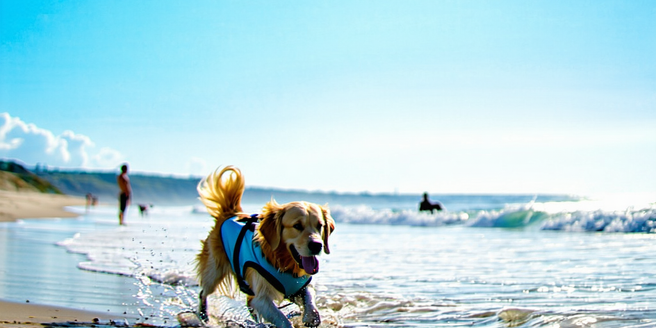
Understanding the Need for Pet Sunscreen
Pets, much like humans, are vulnerable to the sun’s harmful rays, which can lead to skin damage, burns, and even cancer. Having a protective layer of fur doesn’t make them immune to sunburn. Areas like the nose, ears, and belly have thinner fur or are exposed entirely, making them particularly susceptible to sun damage. Light-colored or short-haired pets are at an even greater risk, as they have less natural protection. Applying sunscreen specially formulated for pets helps mitigate these risks, allowing your furry friends to enjoy the outdoors safely. It’s essential to be proactive in understanding their needs to ensure they stay protected all year round, especially during peak sun exposure times. Investing in pet sunscreen is a small step to prevent serious health issues.
Types of Sunscreen Suitable for Pets
Choosing the right sunscreen for your pet is crucial. It’s important to use products specifically formulated for animals, as human sunscreens may contain ingredients that are harmful if ingested. Pet sunscreens should be free from zinc oxide and para-aminobenzoic acid (PABA), which are toxic to animals. Products that are water-resistant and offer broad-spectrum protection against UVA and UVB rays are the best choices. Many pet-friendly brands offer sprays, wipes, and creams suitable for different needs and preferences. Remember to perform a patch test before full applications to ensure there are no adverse reactions. Consulting with a vet can also provide guidance on selecting a suitable sunscreen for your pet’s specific requirements.
How to Safely Apply Sunscreen to Pets
Applying sunscreen to pets requires care and attention to ensure their safety and comfort. First, choose a shaded area to minimize stress and distractions. Use a small amount of pet-safe sunscreen, and gently rub it onto exposed areas such as the nose, ears, belly, and any other spots where fur is thin or absent. Be cautious not to apply the product too close to the eyes, as this might cause irritation. It’s crucial to let the sunscreen absorb before your pet heads outside, which might require a few minutes of distraction with toys or treats. Regular reapplication, especially after swimming or excessive sweating, is key to effective sun protection.
Common Areas That Need More Protection
Certain areas on pets are more prone to sun damage due to their lack of fur coverage or exposure to direct sunlight. The most common spots for sunburn include the nose, ears, belly, and areas around the mouth. These regions often have less fur density or are completely exposed, making them highly vulnerable to UV rays. Pets with light or white fur, and those with thin coats, are at an increased risk as they naturally offer less natural protection against the sun. Regular application of sunscreen to these areas is crucial, especially during sunny days when UV exposure is at its peak. Being vigilant about these areas can prevent sunburn and long-term skin damage.
Choosing the Right Sunscreen for Your Pet’s Skin
When selecting sunscreen for your pet, it’s essential to consider their individual skin type and specific needs. Pets with sensitive skin or allergic tendencies require hypoallergenic products without harsh chemicals or artificial fragrances. Always opt for a broad-spectrum sunscreen designed for pets, which ensures protection against both UVA and UVB rays. Ingredients like titanium dioxide and octisalate are considered safer choices for animals. It’s also beneficial to look for water-resistant formulations if your pet loves swimming or playing in water. Consulting a veterinarian provides additional assurance in making the best choice for your pet’s dermatological health.
Signs of Sun Damage in Pets and Prevention Tips
Recognizing sun damage in pets early can prevent further harm and aid in effective treatment. Common signs include redness, hair loss, blistering, and tenderness in exposed areas like the nose and ears. Severe cases might lead to skin ulcerations or changes in pigmentation. To prevent sun damage, apply pet-safe sunscreen regularly and ensure your pet has access to shaded areas, especially during peak sun hours. Protective clothing and hats can also shield sensitive parts. Observing your pet closely for any unusual skin changes and seeking veterinary advice promptly can safeguard their well-being. Ensuring hydration and limiting sun exposure is vital for prevention.
